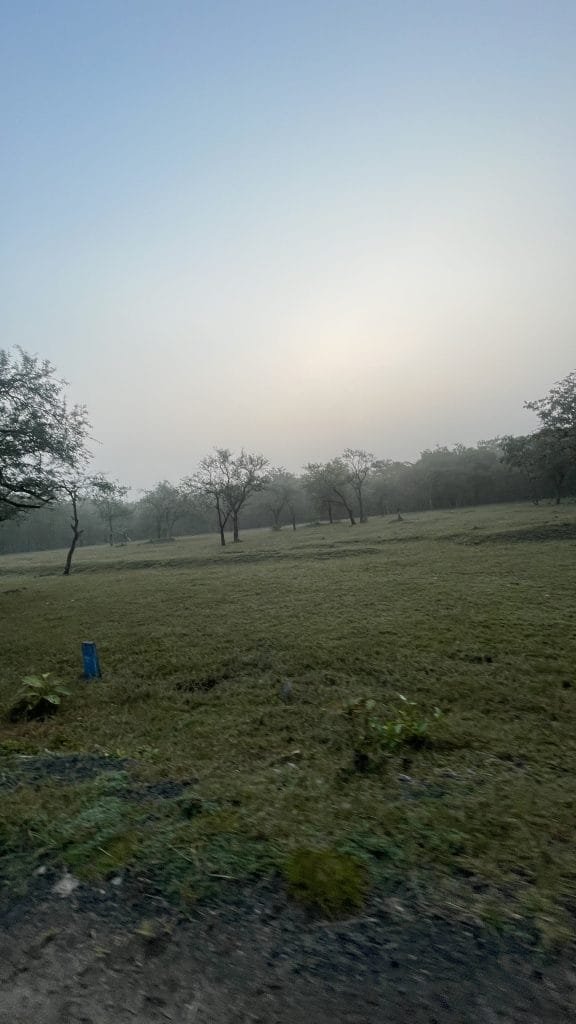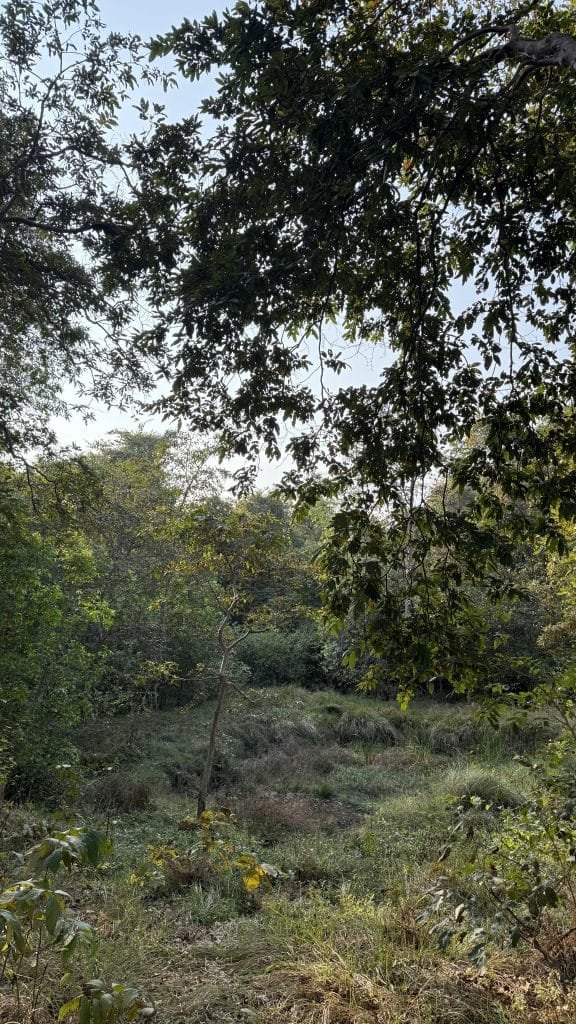On the northernmost tip of Tadoba Andhari Tiger Reserve lies a forest with a unique landscape compared to the protected areas of Tadoba. As a local, I had been desperately waiting for this patch of forests to open for eco-tourism. I had been hearing stories of this patch and I was excited to explore it. In January 2025, the Ecotourism (Jungle safari) gate was opened to the public for tourism. The gate is called Shedegaon Territorial Forest (STF). Unlike other Territorial forests, this gate has gained faster popularity than other territorial forest gates due to regular sightings of wildlife, especially tigers.


It gives access to the westernmost of Brahmapuri forest division. It is a territorial forest. In wildlife parlance, it is a densely wooded forest patch which gives shelter to transient animals as they move from one protected area to another. It is a forest where not all rules and regulations of Critical Tiger Habitat are applicable. However, this forest plays a vital role in sheltering and providing genetic diversity to species. It is the extension of buffer areas, in a literal way.
STF has large lakes and some hidden ponds in heavy undergrowth. It has an extremely dense bamboo forest and an abundance of teak, Mahua, and Arjun trees along with wood-apple trees along river Uma. The Mahua and wood-apple trees are not only medicinal plants but also used as a local delicacy and refreshing welcome drink by locals. Grasslands of all sizes are interspersed across safari routes. Many of these were once farmlands, now lie abandoned and act as grazing lands for wild herbivores.







Tadoba buffer stretches north-south towards the Alizanzha buffer gate which forms the southernmost border of this safari area. The northernmost part falls in the Nagpur division whereas Shedegaon technically falls under the Chandrapur Territorial Forest circle. There are huge lakes on the northeast-east front called Pitichua. The safari routes are not just made by the forest department and locals but it is a maze of pugdundee made by wild animals, tractor tracks left by illegal sand miners and wood mafia, tar road that’s used by locals along a closed mine called Murpar on the western part. One of my favourite spots is the broken iron bridges- a reminiscent of coal mine that was shut down to protect wildlife after the NGT intervention.

Deep inside the woods is the origin of River Uma which is the main tributary of Andhari River and lifeline for wildlife and local farmers along the North borders of Tadoba. River Uma as it gushes southwest towards the town of Chimur, eroding the reddish-brown laterite stone and thus carrying a lot of light colour sand with it. The pristine perennial river attracts all animals as water is available around the year. After this, it heads south and joins the Andhari River. An abundant supply of water and dense woods make it an ideal habitat for animals like tigers. Sighting a tiger is very frequent here along with Leopards, SLoth bears and innumerable herbivores.
The southernmost part close to the buffer line is the territory of a male tiger called Bali/Bamboowala. He is the one who badly battered and bruised Chota Matka last year. The central belt along the Uma River is dominated by a young shy male called Trishul. The origins of both Bali and Trishul are unknown. On the northernmost front is Junior Kankazari male as claimed by a few guides but his sighting is rare as his area is out of the tourism circuit. Off late, a new male is trying to make inroads. His name is Kaluwa. He is the son of Babli and Chota Matka and seems he is here to stay. Holding on to mines area along Uma river, he is reportedly noted with scent marking certain areas while maintaining a low profile. He is definetly younger than Trishul and Bali. On the westernmost part, there is the possibility of more tigers since this area is equally dense around Kasarbodi-Minzari. Historically, this is where Yedanaa from Tadoba core was found dead due to age almost a decade ago.







Along the buffer line, there Paru tigress with 4 cubs sired by Bali. She is linked to Zharnis litter from 2017 with Navegaon male. There is one more female with 3 cubs sired by Bali, she is unnamed yet. The third female is called Uma female since she is seen regularly along River Uma. Uma female and Trishul seem to be bigger than Kaluwa and in coming times, we might see an interesting standoff along Murpar mines & Uma river. One more sub-adult female with unknown origin hangs around here. On the northernmost fringes, there is supposedly a female with 2 cubs, however not sighted/photographed since the area is out of reach and too far out of action. The area upwards of Zari dev, the area of the temple of the local tribal God, is mostly outbound and unexplored.
STF is as large as any buffer area of Tadoba. With excellent forest management and eco-tourism policy the Forest department has managed to convince the locals to share the border with wildlife without much backlash. The Tadoba forest department has been remarkable in converting these territorial forests into a source population of tigers. These habitats are so well managed and preserved that, once what was preserved as a passage for tigers and other wildlife, is now supporting a healthy population of breeding tigers. This is expected to increase the pressure on wildlife, locals and FD but I’m sure the forest department will be able to handle this situation as they have done in past. Along with community participation and incentives for locals backed with advanced wildlife & forest management practices of FD, this place is going to be heaven for wildlife tourism.



As a photographer, STF is a wildlife paradise with scenic photo opportunities along the Uma River & Murpar mines. The open landscape along Pitichua is very encouraging on sunsets. I’m sure in times to come, this extended buffer is going to redefine tourism on the outskirts of Tadoba and reduce the pressure on the core and buffer for wildlife safaris.
P.S. Some of the images received are watsap forwards. Please get in touch with us for credits.

Thanks for the lovely description of STF, for those who have no idea of the diverse forest fauna and landscapes, including history of its origins. Its so much more interesting to go on a safari, once you know the territories and other wildlife forms expected. Keep writing and increasing awareness on Wildlife conservation
Excellent description of the STF, especially the details about the history of its origins, diverse flora and pictures. I feel I can now relate to the forest and the wildlife much more than a tourist sitting waiting only for sightings on a safari… keep writing and creating more Wildlife Awareness.. it’ll make humans respect other animals and birds.. and the environment at large
Awesome blog very informative
Nature at its fiercest and finest. Beautiful work
??